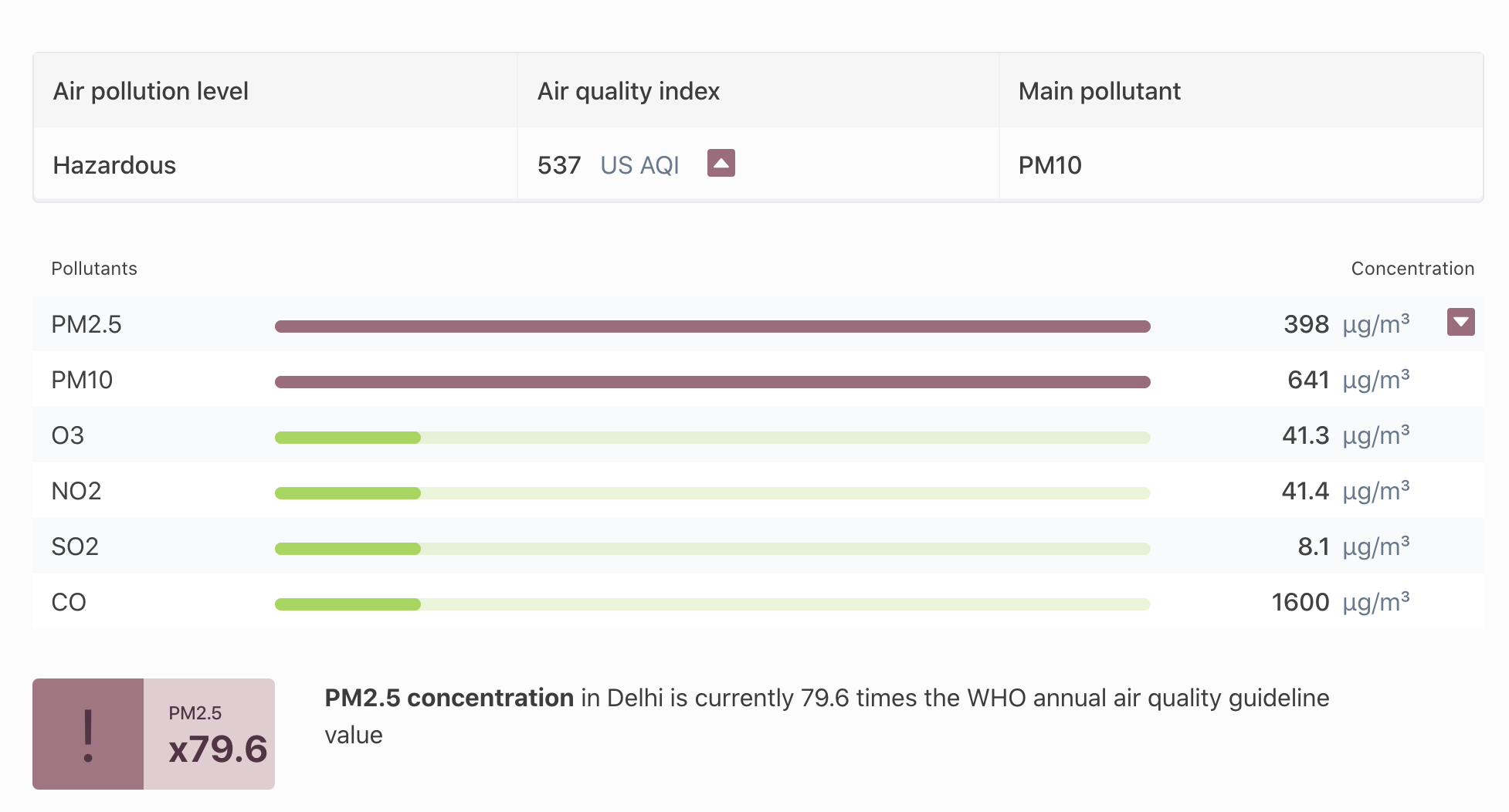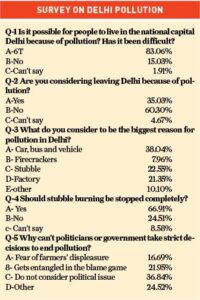
Delhi’s air quality is expected to get worse in the next few weeks, Delhi Pollution Control Committee (DPCC) has warned. The air quality in the national capital has deteriorating into the ‘very poor’ category in the past five days. Historically, data suggests that the first half of November is generally the most polluted period of the year, with an average Air Quality Index (AQI) of 370 over the past five years.

Experts warn that with Diwali falling on November 12, the peak of farm fires, and meteorological conditions that trap pollutants close to the ground, Delhi residents are likely to experience multiple days of highly toxic air. Last year, Delhi recorded 11 ‘severe’ air quality days in November, the highest since AQI measurements began in 2015. There is a high risk of similar severe air quality episodes occurring in mid-November this year.
Beig emphasized the need for drastic measures to improve air quality throughout the region. While the measures outlined in GRAP need to be strictly enforced in Delhi, the impact of a western disturbance on the region during this period could also play a role. If the western disturbance brings rainfall, it could have a positive “wash out” effect on air quality. However, if it only brings moisture without rainfall, air quality may deteriorate further.
Delhi’s air quality is anticipated to deteriorate in the coming weeks, with a warning from the Delhi Pollution Control Committee (DPCC). Over the past five days, the air quality in the national capital has fallen into the ‘very poor’ category. Historical data reveals that the first half of November typically witnesses the most polluted period of the year, with an average Air Quality Index (AQI) of 370 over the past five years.
Experts are cautioning that a combination of factors, including the celebration of Diwali on November 12, the peak of farm fires, and prevailing meteorological conditions that trap pollutants near the surface, could lead to an extended period of highly toxic air for Delhi residents. Last year, Delhi recorded 11 ‘severe’ air quality days in November, the highest count since AQI measurements commenced in 2015. There is a substantial risk of similar severe air quality episodes occurring in mid-November this year.
Dr. Gufran Beig, Chief Scientist at the System of Air Quality and Weather Forecasting and Research (SAFAR), emphasised the necessity for implementing drastic measures to enhance air quality throughout the region. While the guidelines outlined in the Graded Response Action Plan (GRAP) must be rigorously enforced in Delhi, the influence of a western disturbance during this period could also be significant. If the western disturbance brings rainfall, it might have a beneficial “wash out” effect on air quality. However, if it merely introduces moisture without substantial rainfall, air quality may further deteriorate.
In response to this impending challenge, government authorities and environmental agencies must take immediate and assertive measures to mitigate the worsening air quality. These efforts should encompass strict enforcement of the GRAP guidelines, as well as measures to control local sources of pollution, such as industrial emissions and vehicular pollution.
Additionally, raising public awareness about the potential health risks associated with the upcoming period of poor air quality is imperative. Citizens should be encouraged to take precautions, such as wearing masks and limiting outdoor activities, to protect their health.
Air pollution may increase risk of type 2 diabetes
A study published in the BMJ Open Diabetes Research and Care journal reveals a link between exposure to polluted air and an increased risk of type-2 diabetes. Conducted in Delhi and Chennai, the research focused on the effects of inhaling fine pollution particles known as PM2.5, which are 30 times thinner than a strand of hair. The study demonstrated that exposure to high levels of PM2.5 led to elevated blood sugar levels and a higher incidence of type-2 diabetes.
While fine particulate matter exposure has been associated with various cardiovascular and cardiometabolic diseases, this study specifically addresses regions with high air pollution, such as India, which has a significant burden of non-communicable diseases. The research analyzed a group of over 12,000 individuals from 2010 to 2017, monitoring their blood sugar levels and assessing their air pollution exposure using satellite data and models. The findings indicate that short-term, medium-term, and long-term exposure to PM2.5 is linked to glycemic markers and the incidence of diabetes in highly polluted regions.
The study emphasizes the need for region-specific policies to mitigate air pollution, given the substantial health risks associated with diabetes in heavily polluted areas.